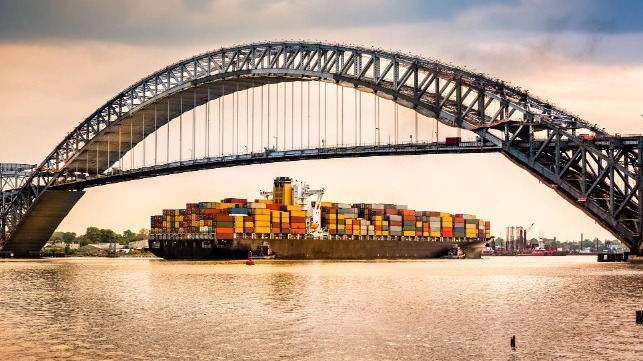Multiple Boxship Firms are Achieving IMO 2030 Target a Decade Early

On Friday, Greek shipowner Danaos Shipping joined the growing ranks of container ship companies that have announced that they are already compliant with the IMO 2030 carbon intensity goal.
Danaos, one of the leading independent owners and managers of container ships, said that its annual emissions per ton-mile have fallen by about 42 percent since 2008. The IMO's climate ambition plan calls for a carbon intensity reduction of at least 40 percent between 2008 and 2030, and Danaos - like others - says that it has already exceeded this target.
Danaos' total TEU capacity has grown over the period, but its emissions intensity has fallen thanks to economies of scale and a variety of optimization measures, the firm said in a statement. These include optimizing main engines for slow steaming, propeller retrofits, low friction paint, bulbous bow modification, increased draft and a variety of other improvements.
Danaos also employs route optimization to guide its vessels around bad weather, which helps keep fuel costs down. In order to stay on track, the company has created a "big data" decision support program (dubbed WAVES), which produces automatic alerts in the event of deviations from planned optimal operation. Danaos says that it is investigating alternative fuels and working on further optimization in order to keep the positive trend going in future years.
The firm's announcement follows comparable news from Yang Ming, Maersk and Hapag-Lloyd. In February, number-one boxship company AP Moller-Maersk announced that it has already reduced its carbon emissions by 42 percent compared with 2008. Maersk was an early adopter of megasized newbuilds, slow steaming and "nose job" bulbous bow replacements, all of which contribute to reduced fuel consumption. Maersk has an internal target to achieve a 60 percent carbon intensity reduction by 2030.
In April, Hapag-LLoyd said that it had also exceeded the target, achieving a 50 percent reduction in carbon intensity from 2008-2030. Early this month, Yang Ming announced that its CO2 emissions have also fallen by half since 2008. Like others, Yang Ming said that the improvement came through a combination of fleet renewal, fuel consumption optimization and weather routing improvements.
